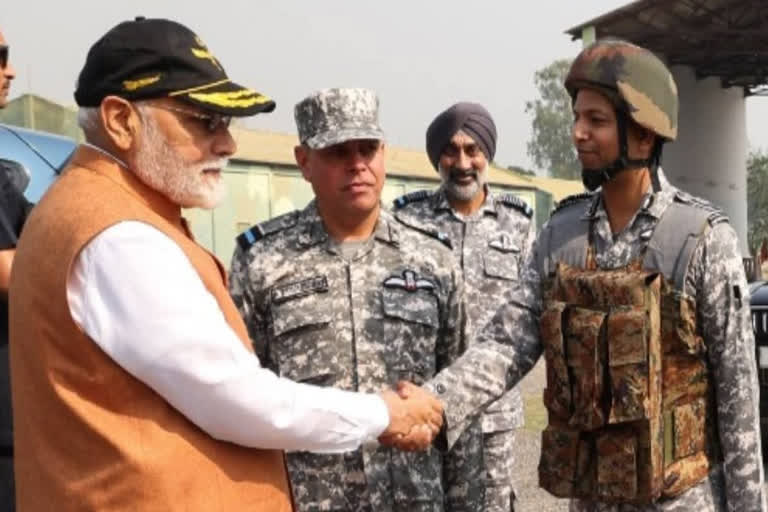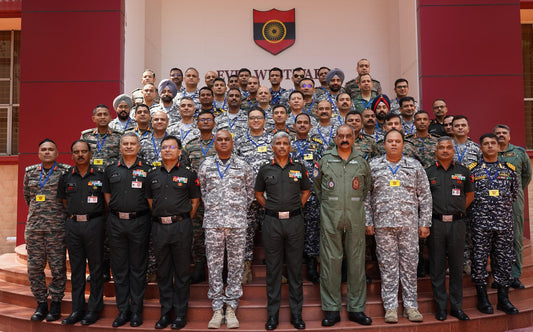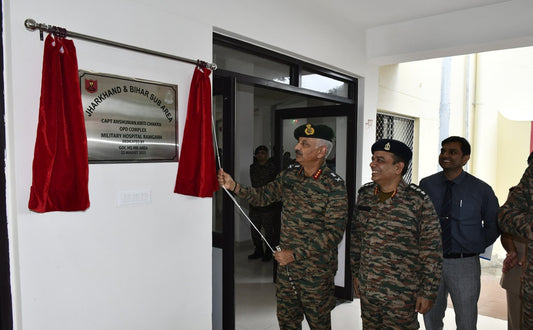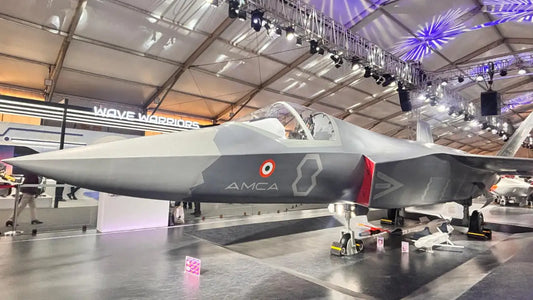Group Captain Animesh Patni: Celebrated Vir Chakra Recipient and Architect of India’s Historic S-400 Air Defence Success

On Independence Day 2025, President Droupadi Murmu awarded the Vir Chakra, India's third-highest wartime gallantry honor, to Group Captain Animesh Patni for his significant contribution during Operation Sindoor.
Patni led the S-400 air defense regiment to achieve the world’s farthest confirmed surface-to-air missile hit at 300 kilometers, successfully downing a Pakistani aircraft deep within adversarial territory. This feat not only highlighted India's unparalleled air defense capabilities but also altered the strategic landscape of aerial warfare in South Asia.
Who is Group Captain Animesh Patni?
Roots in Rajasthan
Originating from Kunjed village in Baran district, Rajasthan, Group Captain Patni's achievements have filled the region with pride, placing Baran prominently on India’s defense map.
Military Career
Commissioned into the Indian Air Force on December 17, 2005, as part of the 176th Course, Patni, a seasoned fighter pilot with extensive experience on the MiG-29, was selected to command India's advanced S-400 ‘Triumf’ air defense system.
His career trajectory illustrates the rise of a young flight cadet through determination, technological expertise, and leadership to command India's most advanced missile defense system.
Operation Sindoor: The Context
Trigger for Action
Operation Sindoor was launched in response to the April 22, 2025, Pahalgam terrorist attack, in which 26 tourists were killed by Pakistan-backed groups. The Resistance Front (TRF) claimed responsibility, prompting decisive action from New Delhi.
The Operation
Initiated on May 7, 2025, Operation Sindoor was a precise 23-minute strike targeting nine terror camps across Pakistan and Pakistan-occupied Kashmir. Unlike previous constrained operations, this mission carried full political backing, granting the Indian Air Force unrestricted operational freedom.
Objectives included:
- Destroying terrorist infrastructure without harming civilians.
- Exhibiting long-range precision strike and air defense superiority.
- Sending a strategic deterrent message to Pakistan and China.
The Historic 300 km Kill
A Global Record
During the operation, India’s S-400 system successfully shot down a Pakistani Saab 2000 AEW&C aircraft at a distance of 300 kilometers.
Air Chief Marshal A.P. Singh described the event as “the largest-ever recorded surface-to-air kill we can talk about.” Military analyst Tom Cooper recognized it as “the longest confirmed SAM kill in history,” surpassing the previous 200 km record from the Russia-Ukraine conflict.
Precision and Risk
The engagement required:
- Long-range radar tracking across over 300 kilometers.
- Missile guidance precision amidst contested electronic warfare.
- Split-second decision-making to engage a high-value, rapidly moving target.
- Positioning the S-400 system near the border, rendering it susceptible to Pakistani artillery attacks.
Despite these challenges, Group Captain Patni's leadership ensured flawless execution.
The S-400 “Sudarshan Chakra”: India’s Game-Changer
India’s ₹39,000 crore S-400 Triumf system, acquired from Russia, played a pivotal role in Operation Sindoor.
Missile Arsenal:
- 40N6 missiles – 400 km range.
- 48N6DM missiles – 250 km range.
- 9M96E2 missiles – 120 km range.
- 9M96E missiles – 40 km range.
Radar Capabilities:
- 91N6E ‘Big Bird’ radar – detects targets at 600 km.
- 92N6E ‘Grave Stone’ radar – fire-control radar capable of engaging 36 targets simultaneously.
Operational Results:
- Engaged 16–18 targets, including drones, fighters, and precision-guided weapons.
- Downed five Pakistani fighter jets in addition to the AEW&C aircraft.
- Intercepted Pakistan’s H-2 and H-4 glide bombs mid-air.
Air Chief Marshal Singh remarked, “The S-400 was a game-changer for us.”
Significance of the Achievement
Tactical Impact
- Neutralized Pakistan’s airborne surveillance capability.
- Protected Indian bases through area denial.
- Prevented the Pakistani Air Force from launching counter-strikes.
Strategic Messaging
- To Pakistan: India can penetrate deep into its airspace.
- To China & Region: India possesses credible long-range precision strike capability.
- To the World: India exercises power with restraint, targeting terror camps while sparing civilians.
Technological Validation
India’s decision to acquire the S-400 despite US CAATSA sanctions pressure was validated by this historic success.
The Vir Chakra Recognition
Established in 1950, the Vir Chakra is India’s third-highest wartime gallantry award. Group Captain Patni's recognition is particularly notable for an air defense officer, as most recipients are fighter pilots or ground troops.
His award reflects:
- Remarkable leadership under combat pressure.
- Tactical excellence in achieving a record-breaking kill.
- Bravery in high-risk deployment areas.
Rajasthan’s Pride and Family Honour
Patni's recognition brought immense pride to Baran district and Kunjed village. His brother, Advocate Prashant Patni, shared that Prime Minister Narendra Modi personally visited Adampur Air Base to congratulate him.
His achievement is already inspiring the youth of Rajasthan to consider careers in the armed forces.
Operation Sindoor: Overall Outcomes
- Destroyed terror camps in Muridke and Bahawalpur.
- Neutralized six Pakistani radars and damaged airbases.
- Shot down six Pakistani aircraft, including AEW&C and fighter jets.
- Thwarted multiple drone and missile attacks on Indian territory.
International analysts confirmed India’s success. John Spencer and Vincent Viola called it a “strategic turning point,” while satellite data supported the damage inflicted on Pakistan’s air bases.
Legacy and Future Implications
Group Captain Patni’s success will influence future Indian military policies:
- Long-range SAM engagements will become key to defense strategy.
- Recognition of air defense commanders as significant warfighters.
- Increased focus on S-400 training and integration with indigenous systems.
Ultimately, it enhances India’s deterrence posture, indicating that terrorist attacks will prompt swift and decisive responses.
Conclusion
From a village in Rajasthan to commanding India’s most advanced missile defense, Group Captain Animesh Patni has made history. His leadership during Operation Sindoor resulted in the longest-ever recorded air defense kill at 300 km, solidifying India’s status as a modern military power.
The Vir Chakra awarded to him is more than a personal accolade — it represents India’s technological advancement, strategic determination, and the bravery of its air warriors.
Patni’s story exemplifies the evolution of the Indian Air Force: from Kargil’s aerial battles to today’s dominance over long-range precision targeting. His legacy will inspire future generations to serve, innovate, and defend India’s skies with equal resolve.




















2 comments
He is an Air Force Officer wearing Combat dress
The PM is shaking the hand of an Army personnel. Since when is the Army have the rank of Group Captain ??